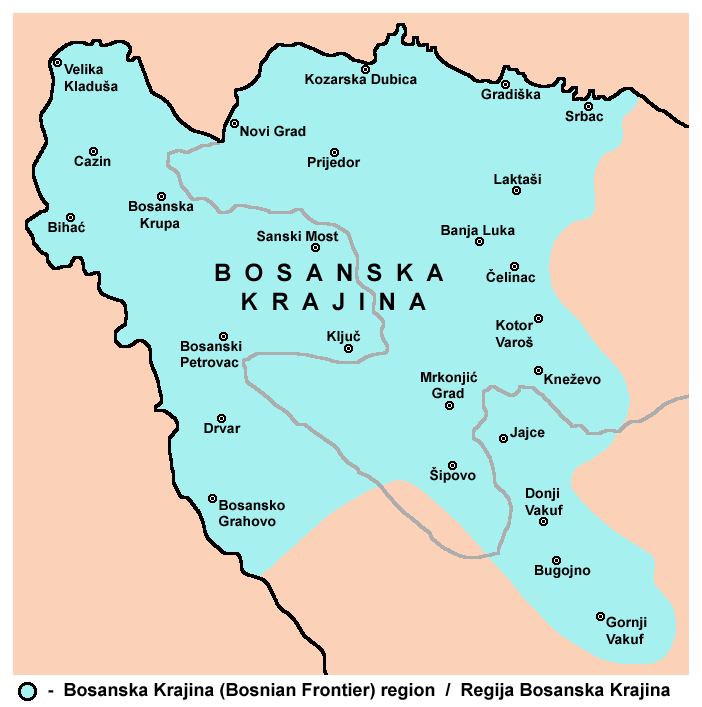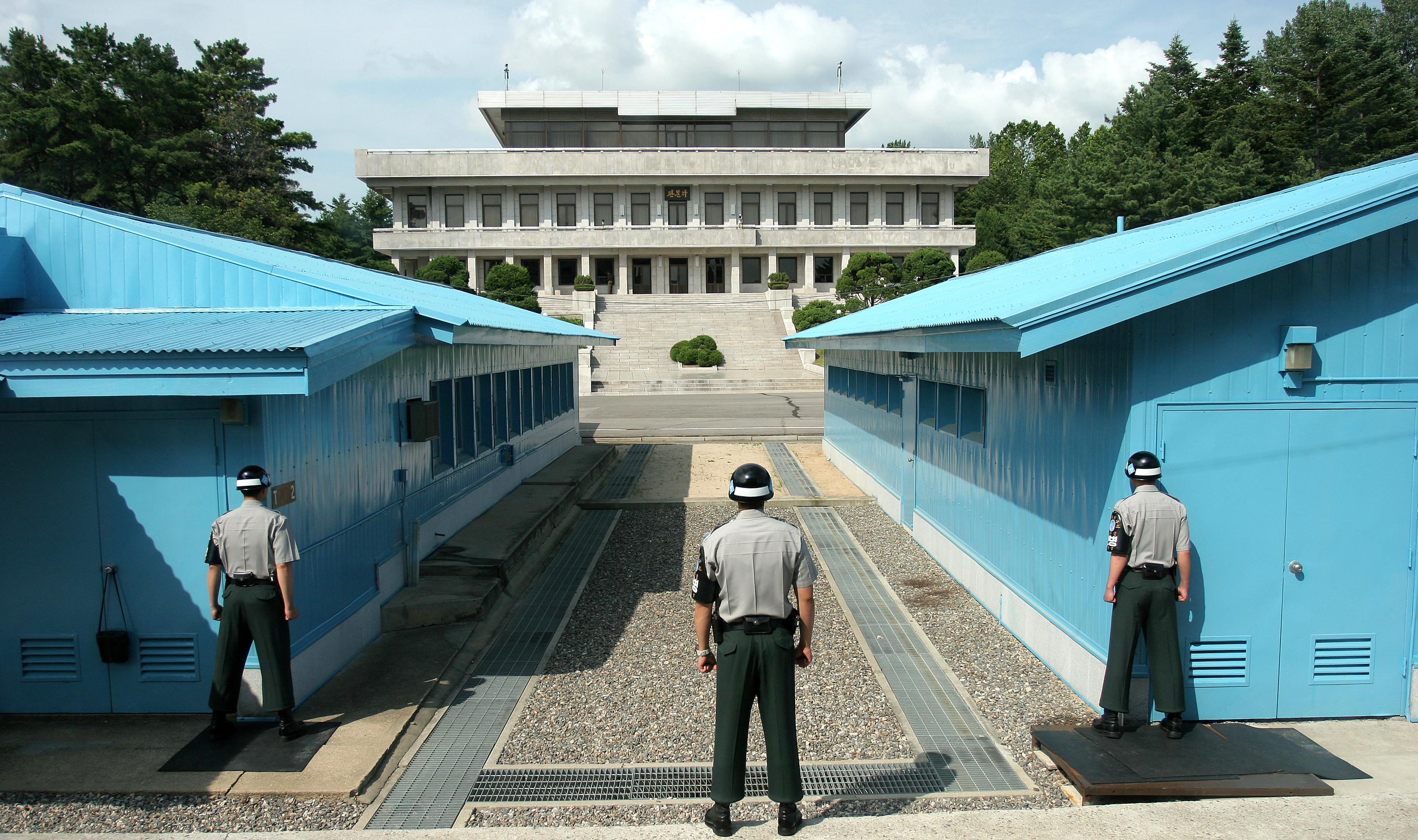|
Krajina
Krajina () is a Slavic languages, Slavic toponym, meaning 'country' or 'march (territory), march'. The term is related to ''kraj'' or ''krai'', originally meanings ''land'', ''country'' or ''edge''Rick Derksen (2008), ''Etymological Dictionary of the Slavic Inherited Lexicon'', Brill: Leiden-Boston, page 244 and today denoting a region or province, usually remote from urban centers. Etymology The Serbo-Croatian word ''krajina'' derives from Proto-Slavic *''krajina'', derived from *''krajь'', related to *''krojiti'' 'to cut';''*krajina'' in Oleg Trubačóv (ed.) (1974–), ''Этимологический словарь славянских языков'' [Etymological dictionary of Slavic languages], Moscow: Nauka, volume 12, pages 87-88 the original meaning of ''krajina'' thus seems to have been 'place at an edge, fringe, borderland', as reflected in the meanings of Church Slavonic , '. In Old East Slavic: Ѹкраина/Ꙋкраина, romanized: Oukraina [uˈkrɑjinɑ]) appear ... [...More Info...] [...Related Items...] OR: [Wikipedia] [Google] [Baidu] |
Name Of Ukraine
The earliest known usage of the name ''Ukraine'' ( , , ; ) appears in the Hypatian Codex of 1425 under the year 1187 in reference to a part of the territory of Kievan Rus'. The use of "the Ukraine" has been officially deprecated by the Ukrainian government and many English-language media publications. ''Ukraine'' is the official full name of the country, as stated in Ukrainian Declaration of Independence, its declaration of independence and Constitution of Ukraine, its constitution; there is no official alternative long name. From 1922 until 1991, ''Ukraine'' was the informal name of the Ukrainian Soviet Socialist Republic within the Soviet Union (annexed by Germany as during 1941–1944). After the Russian Revolution in 1917–1921, there were the short-lived Ukrainian People's Republic and Ukrainian State, Treaty of Brest-Litovsk (Ukraine–Central Powers), recognized in early 1918 as consisting of nine governorates of the former Russian Empire (without Taurida Go ... [...More Info...] [...Related Items...] OR: [Wikipedia] [Google] [Baidu] |
Bosanska Krajina
Bosanska Krajina ( sr-Cyrl, Босанска Крајина, , ) is a geographical region, a subregion of Bosnia, in western Bosnia and Herzegovina. It is enclosed by several rivers, namely the Sava (north), Glina (northwest), Vrbanja and Vrbas (east and southeast, respectively). The region is also a historic, economic, and cultural entity of Bosnia and Herzegovina, noted for its preserved nature and wildlife diversity. The largest city and historical center of the region is Banja Luka. Other cities and towns include Bihać, Bosanska Krupa, Bosanski Petrovac, Čelinac, Bosansko Grahovo, Bužim, Cazin, Drvar, Gradiška, Ključ, Kostajnica, Kozarska Dubica, Kneževo, Kotor Varoš, Laktaši, Mrkonjić Grad, Novi Grad, Prijedor, Sanski Most, Šipovo, Velika Kladuša, Teslić, and Prnjavor. Bosanska Krajina has no formal status; however, it has a significant cultural and historical identity that was formed through several historic and economic events. The territory of Bos ... [...More Info...] [...Related Items...] OR: [Wikipedia] [Google] [Baidu] |
Ukrainian Language
Ukrainian (, ) is an East Slavic languages, East Slavic language, spoken primarily in Ukraine. It is the first language, first (native) language of a large majority of Ukrainians. Written Ukrainian uses the Ukrainian alphabet, a variant of the Cyrillic script. The standard language is studied by the National Academy of Sciences of Ukraine and Potebnia Institute of Linguistics. Comparisons are often made between Ukrainian and Russian language, Russian, another East Slavic language, yet there is more mutual intelligibility with Belarusian language, Belarusian,Alexander M. Schenker. 1993. "Proto-Slavonic", ''The Slavonic Languages''. (Routledge). pp. 60–121. p. 60: "[The] distinction between dialect and language being blurred, there can be no unanimity on this issue in all instances..."C.F. Voegelin and F.M. Voegelin. 1977. ''Classification and Index of the World's Languages'' (Elsevier). p. 311, "In terms of immediate mutual intelligibility, the East Slavic zone is a sin ... [...More Info...] [...Related Items...] OR: [Wikipedia] [Google] [Baidu] |
Belarusian Language
Belarusian (, ) is an East Slavic languages, East Slavic language. It is one of the two Languages of Belarus, official languages in Belarus, the other being Russian language, Russian. It is also spoken in parts of Russia, Lithuania, Latvia, Poland, Ukraine, and the United States by the Belarusian diaspora. Before Belarus Dissolution of the Soviet Union, gained independence in 1991, the language was known in English language, English as ''Byelorussian'' or ''Belorussian'', or alternatively as ''White Russian''. Following independence, it became known as ''Belarusian'', or alternatively as ''Belarusan''. As one of the East Slavic languages, Belarusian shares many grammatical and lexical features with other members of the group. To some extent, Russian, Ukrainian language, Ukrainian, and Belarusian retain a degree of mutual intelligibility. Belarusian descends from a language generally referred to as Ruthenian language, Ruthenian (13th to 18th centuries), which had, in turn, descend ... [...More Info...] [...Related Items...] OR: [Wikipedia] [Google] [Baidu] |
Bihać
Bihać is a city and the administrative centre of Una-Sana Canton of the Federation of Bosnia and Herzegovina, an entity of Bosnia and Herzegovina. It is situated on the banks of river Una (Sava), Una in northwestern Bosnia and Herzegovina, in the Bosanska Krajina region close to the border with Croatia. In 2013 its population was 56,261. Settlements * Bajrići (Bihać), Bajrići * Brekovica * Bugar * Ćukovi * Doljani (Bihać), Doljani * Donja Gata * Dubovsko * Gorjevac * Grabež * Grmuša * Hrgar * Izačić * Jezero (Bihać), Jezero * Kalati * Kulen Vakuf * Lohovo * Lohovska Brda * Mala Peća * Mali Skočaj * Međudražje * Muslići * Ostrovica, Bosnia and Herzegovina, Ostrovica * Papari * Praščijak * Pritoka * Račić, Bosnia and Herzegovina, Račić * Rajinovci * Ripač * Spahići, Bosnia and Herzegovina, Spahići * Srbljani * Velika Gata * Veliki Skočaj * Veliki Stjenjani * Vikići * Vrsta * Zavalje i Zlopoljac History According to documents and historical sources, the ... [...More Info...] [...Related Items...] OR: [Wikipedia] [Google] [Baidu] |
Prijedor
Prijedor ( sr-cyrl, Приједор, ) is a city in Republika Srpska, Bosnia and Herzegovina. As of 2013, it had a population of 80,916 inhabitants within its administrative limits. Prijedor is situated in the northwestern part of the Bosanska Krajina geographical region. Prijedor is known for its mixed religious heritage comprising Eastern Orthodox Christianity, Roman Catholicism and Islam. Historic buildings from the Ottoman and Austrian-Hungarian periods are a feature of the urban landscape. The city underwent extensive renovation between 2006 and 2009. Geography The urban centre of Prijedor, within the city of Prijedor, is located in the northwestern part of Bosnia and Herzegovina, on the banks of the Sana (river), Sana and Gomjenica rivers, and at the southwestern hills of the Kozara mountain. The area of the municipality is . The town is situated at 44°58'39" N and 16°42'29" E, at an altitude of Height above mean sea level, above sea level. It is traditionally a par ... [...More Info...] [...Related Items...] OR: [Wikipedia] [Google] [Baidu] |
Banja Luka
Banja Luka ( sr-Cyrl, Бања Лука, ) or Banjaluka ( sr-Cyrl, Бањалука, ) is the List of cities in Bosnia and Herzegovina, second largest city in Bosnia and Herzegovina and the largest city in Republika Srpska. Banja Luka is the traditional centre of the densely forested Bosanska Krajina region of northwestern Bosnia (region), Bosnia. , the city proper has a population of 138,963, while its administrative area comprises a total of 185,042 inhabitants. The city is home to the University of Banja Luka and University Clinical Center of the Republika Srpska, as well as numerous entity and state institutions for Republika Srpska and Bosnia and Herzegovina, respectively. The city lies on the Vrbas (river), Vrbas river and is well known in the countries of the Socialist Federal Republic of Yugoslavia, former Yugoslavia for being full of tree-lined avenues, boulevards, gardens, and parks. Banja Luka was designated European city of sport in 2018. Name The name ''Banja Luka' ... [...More Info...] [...Related Items...] OR: [Wikipedia] [Google] [Baidu] |
Oton Iveković - Krajina
Oton, officially the Municipality of Oton (; , , ), is a municipality in the province of Iloilo, Philippines. According to the 2020 census, it has a population of 98,509 people making it as the most populous town in the province and the entire Panay island. Oton is west of Iloilo City and is part of the Metro Iloilo–Guimaras area. Oton is the second oldest Spanish settlement in the Philippines after Cebu. It was founded in 1571 and later became the capital of the islands of Panay, Guimaras, Negros, Tablas, Sibuyan, and Romblon. History Oton, formerly known as Ogtong, has a rich history dating back to the settlement of Malays in the area. Evidence of this early settlement includes the discovery of a gold death mask in Barangay San Antonio during the 1960s. The town's name, Oton, was mentioned in records from the Yuan Dynasty in the 1300s, referred to as in Hokkien . The arrival of the Spanish in the mid-16th century marked a significant turning point in Oton's history. ... [...More Info...] [...Related Items...] OR: [Wikipedia] [Google] [Baidu] |
Marches
In medieval Europe, a march or mark was, in broad terms, any kind of borderland, as opposed to a state's "heartland". More specifically, a march was a border between realms or a neutral buffer zone under joint control of two states in which different laws might apply. In both of these senses, marches served a political purpose, such as providing warning of military incursions or regulating cross-border trade. Marches gave rise to the titles marquess (masculine) or marchioness (feminine). Etymology The word "march" derives ultimately from a Proto-Indo-European root *''merg-'', meaning "edge, boundary". The root *''merg-'' produced Latin ''margo'' ("margin"), Old Irish ''mruig'' ("borderland"), Welsh ''bro'' ("region, border, valley") and Persian and Armenian '' marz'' ("borderland"). The Proto-Germanic ''*marko'' gave rise to the Old English word ''mearc'' and Frankish ''marka'', as well as Old Norse ''mǫrk'' meaning "borderland, forest", and derived from ''merki'' "boundary ... [...More Info...] [...Related Items...] OR: [Wikipedia] [Google] [Baidu] |
Border
Borders are generally defined as geography, geographical boundaries, imposed either by features such as oceans and terrain, or by polity, political entities such as governments, sovereign states, federated states, and other administrative division, subnational entities. Political borders can be established through warfare, colonization, or mutual agreements between the political entities that reside in those areas. Some borders—such as most states' internal administrative borders, or inter-state borders within the Schengen Area—are open border, open and completely unguarded. Most external political borders are partially or fully controlled, and may be crossed legally only at designated border checkpoints; adjacent Border control#Border zones, border zones may also be controlled. For the purposes of border control, airports and Port#Seaport, seaports are also classed as borders. Most countries have some form of border control to regulate or limit the movement of people, animals ... [...More Info...] [...Related Items...] OR: [Wikipedia] [Google] [Baidu] |
Slovene Language
Slovene ( or ) or Slovenian ( ; ) is a South Slavic languages, South Slavic language of the Balto-Slavic languages, Balto-Slavic branch of the Indo-European languages, Indo-European language family. Most of its 2.5 million speakers are the inhabitants of Slovenia, the majority of them ethnic Slovenes. As Slovenia is part of the European Union, Slovene is also one of its 24 Languages of the European Union, official and working languages. Its grammar is highly fusional languages, fusional, and it has a Dual (grammatical number), dual grammatical number, an archaic feature shared with some other Indo-European languages. Two accentual norms (one characterized by Pitch-accent language, pitch accent) are used. Its flexible word order is often adjusted for emphasis or stylistic reasons, although basically it is an subject–verb–object word order, SVO language. It has a T–V distinction: the use of the V-form demonstrates a respectful attitude towards superiors and the elderly, ... [...More Info...] [...Related Items...] OR: [Wikipedia] [Google] [Baidu] |







